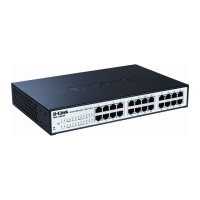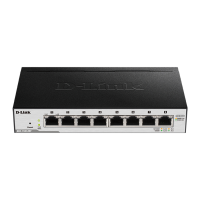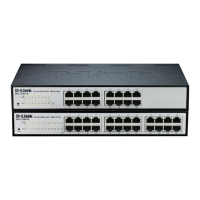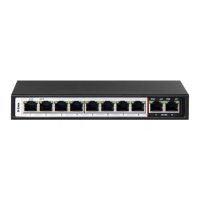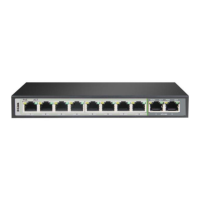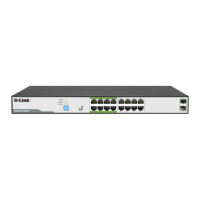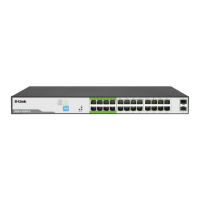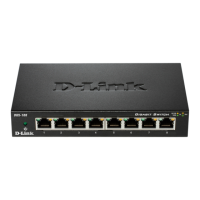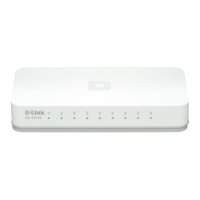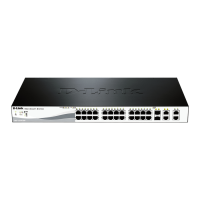Do you have a question about the D-Link EasySmart DGS-1100-24 and is the answer not in the manual?
Guides the user through unpacking the switch and checking contents against the packing list.
Instructions for installing the switch on a desktop or shelf, including rubber feet placement.
Instructions for mounting the switch in an EIA standard rack using mounting brackets.
Details critical safety guidelines for installing the switch in a rack environment.
Instructions for plugging in the AC power cord and properly grounding the switch.
Explains how to use a web browser to configure and monitor the switch, listing supported browsers.
Lists the required equipment and steps to connect a PC to the switch for web configuration.
Details how to access the switch's web interface, including IP address and login credentials.
Introduces the SmartConsole Utility for discovering and managing D-Link switches.
Provides step-by-step instructions for installing the SmartConsole Utility via CD or manual setup.
Describes the SmartConsole Utility's components: Device Configurations, Device List, and SmartConsole Settings.
Allows configuration of product name, IP address, subnet mask, system name, location, and trap IP.
Guides on upgrading switch firmware using the SmartConsole Utility, specifying firmware path and password.
Describes how to discover switches on the network and manually add or remove devices from the list.
Overview of the web interface, including Tool Bar, Function Tree, and Main Configuration Screen.
Covers saving configurations, rebooting the device, and resetting to factory defaults.
Guides on backing up/upgrading firmware and backing up/restoring configuration settings.
Explains static and DHCP methods for obtaining an IP address for the switch.
Allows monitoring and adjustment of port speed, link status, and flow control settings.
Secures the switch by setting an old and new password for access control.
| Switching Capacity | 48 Gbps |
|---|---|
| Forwarding Rate | 35.7 Mpps |
| MAC Address Table Size | 8K |
| Jumbo Frame | 9, 216 bytes |
| Switch Type | Managed |
| Packet Buffer Memory | 512 KB |
| Humidity | 10% to 90% non-condensing |
| Ports | 24 x 10/100/1000BASE-T |
| QoS | 802.1p Priority Queues |
| Power Supply | Internal power supply |
| Operating Temperature | 0 to 40 °C |
| Storage Temperature | -10 to 70 °C |

